
High-speed trains wait to run during the Spring Festival travel rush in Nanjing, East China's Jiangsu province, on Jan 10, 2020. [Photo by Su Yang/for chinadaily.com.cn]
China's transportation goals set in the 13th Five-Year Plan (2016-2020) are expected to be fulfilled satisfactorily, said Minister of Transport Li Xiaopeng at a news conference on Thursday.
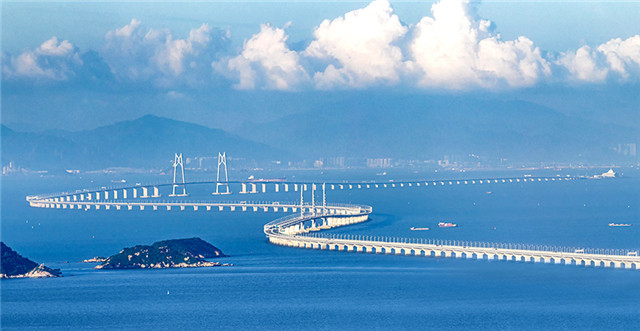
The Hong Kong-Zhuhai-Macao Bridge is a landmark project of the Greater Bay Area development. [Photo by Wang Jiaxin/For China Daily]
From 2016 to the end of this year, China is expected to achieve 16 trillion yuan ($2.39 trillion) of fixed-asset investment in transportation.
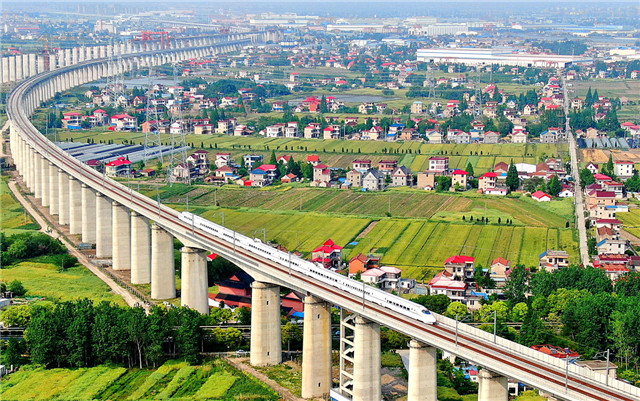
A trial train hits 220 kilometers per hour on a section of the Shanghai-Suzhou-Nantong Railway during a top-speed test run on May 4, 2020. [Photo provided to China Daily]
The total railway network has reached 146,000 kilometers, connecting 99 percent of cities with populations of more than 200,000. The high-speed railway network alone has reached 38,000 kilometers, connecting 95 percent of cities with populations of more than 1 million, a global record.
The high-speed trains carry 70 percent of all train passengers.
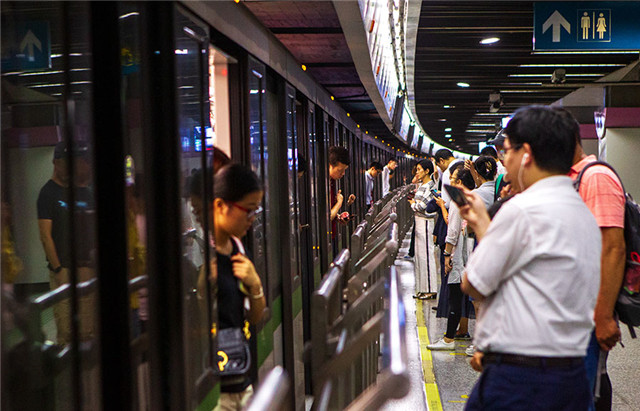
Shanghai's metro system is one of the longest in the world. [Photo provided to China Daily]
The total urban railway has reached 7,000 kilometers.

Winding roads lead to a village in Bijie, Guizhou province. The roads were renovated in April 2020. [Photo/China News Service]
The total road network has reached 5.1 million kilometers. The highway network has reached 155,000 kilometers, connecting 98.6 percent of cities with more than 200,000 people.
The newly built and refurbished roads in rural areas have reached 1.39 million kilometers by the end of September, and the figure is expected to exceed 1.4 million kilometers by the end of this year.
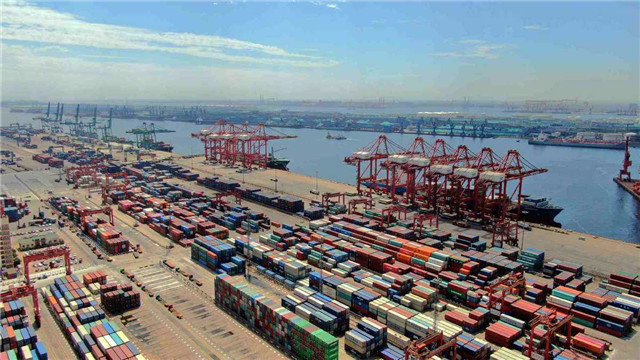
A bird's-eye view of the Tianjin Port on Aug 14, 2019. [Photo/Xinhua]
The country has 16,100 kilometers of high-grade inland waterways, and 2,530 berths of 10,000-ton class and above at coastal ports.
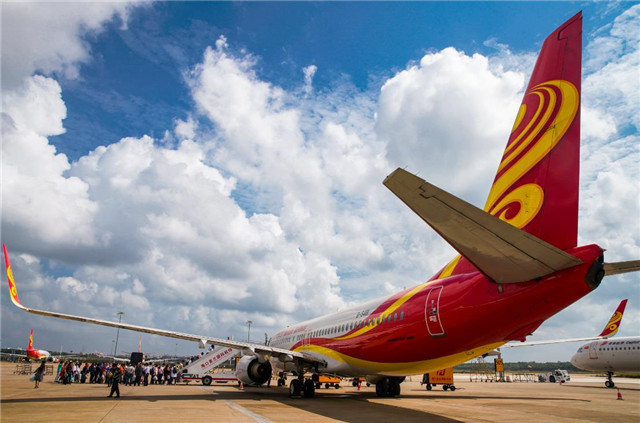
Passengers board a Hainan Airlines airplane at Haikou Meilan International Airport in the capital city of Hainan province on Nov 12, 2018. [Photo by Hu Yuanjia/For China Daily]
The number of airports has reached 241, covering 92 percent of cities in China.
The country had 4,568 domestic routes connecting 234 Chinese cities, and 953 international routes connecting 167 cities in 65 countries. Moreover, China has signed bilateral air services agreements with 127 countries, including 96 countries and regions involved in the Belt and Road Initiative.
The on-schedule rate of civil aviation flight increased from 67 percent in 2015 to 81.65 percent in 2019.
The civil aviation's annual average growth of turnover, passenger capacity and freight traffic volume were 11 percent, 10.7 percent and 4.6 percent, respectively, during 2015-2019. The country's civil aviation shipping scale remains the world's second-largest for 15 consecutive years.
By September, China's passenger and freight airplanes had flown safely for 121 month, or a total of 86.69 million flight hours.
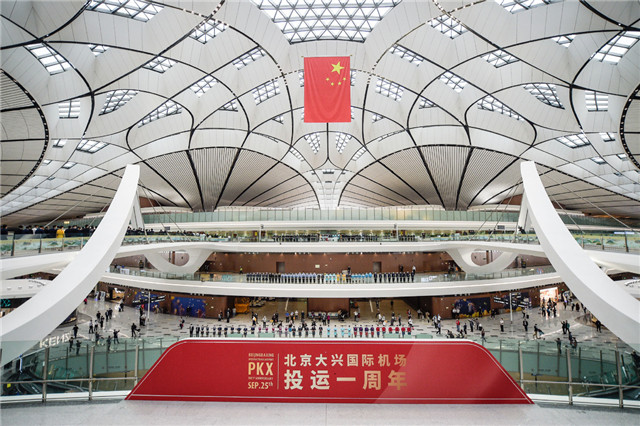
A flag-raising ceremony is held by the Civil Aviation Administration of China to mark the first anniversary of the Beijing Daxing International Airport in Beijing, Sept 25, 2020. [Photo/Xinhua]
The country has built Hong Kong-Zhuhai-Macao Bridge, the Beijing Daxing International Airport, Beijing-Zhangjiakou high-speed railway.

An express worker processes packages at a delivery station in Qinhuangdao, Hebei province, on Feb 24. [Photo by Cao Jianxiong/for China Daily]
The revenue of post industry increased from 403.9 billion yuan in 2015 to 1.1 trillion yuan in 2019, with the annual growth hitting 22 percent. The delivery volume surged from 20.7 billion in 2015 to 80 billion this year, which contributed 50 percent to the world's courier, express, and parcel market.
The average annual growth of delivery volume is over 30 percent during the 13th Five-Year Plan (2016-2020) period. The total logistics cost has been reduced by more than 450 billion yuan.
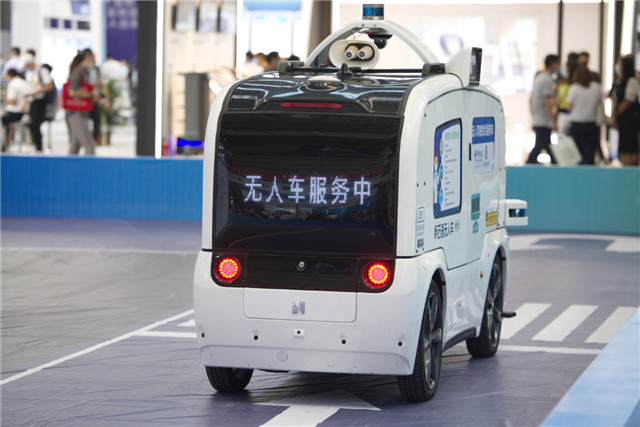
A 5G-enabled vehicle on show during the China Information Technology Expo in Shenzhen, Guangdong province. [Photo/China News Service]
The new technologies and new business models on transportation industry are developing vigorously, with the technologies to build cross-ocean bridge, cross-ocean tunnel, deep-water channel and high-speed railway leading the world. China-made twin-engine single-aisle C919 completed its maiden flight, Beidou Navigation Satellite System is seeing wide application across the country, the business models of online car-hailing and customized bus are emerging, intelligent express terminals are widely distributed, and drone, driverless cars, and unmanned warehouse start to pilot use in delivery industry.




